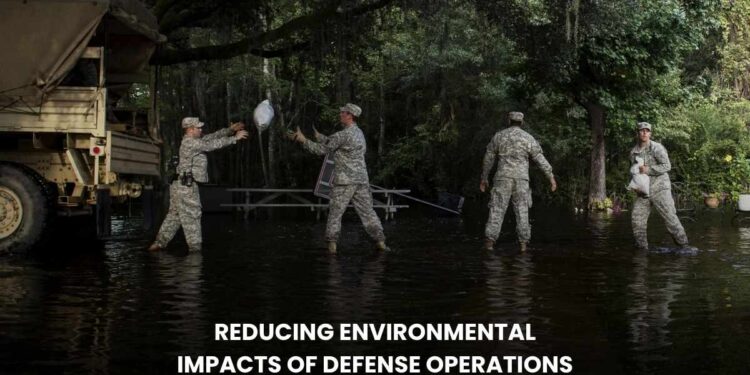In today’s times, protecting the environment is not a choice but a responsibility. In every field, whether it’s industry, education, or defense, it’s crucial to ensure the environment is protected. Along with this initiative, the US DOD has also taken the initiative to make the environment sustainable.
We all know that defense operations result in significant energy consumption, increased pollution, and environmental damage. To change this, the US DoD adopted the goal of sustainability with security, which protects the country while also preserving a clean environment.
This new policy aims to save energy, conserve water, manage waste, and make balanced use of natural resources. In this article, we discuss in detail how the United States Department of Defense works to reduce the environmental impact caused by defense operations.
How is DoD reducing the environmental impacts of defense operations?
The US DoD considers energy efficiency and clean energy use, sustainable infrastructure and construction, water conservation and pollution control, climate adaptation and resilience, and clean logistics and vehicle modification to ensure that their defense operations have the least environmental impact. Each one is discussed below.
Energy Efficiency and Clean Energy Use
The US DoD has increased the use of solar, wind, and geothermal energy at its military bases and operations, replacing traditional fuels with less environmental pollution. Microgrid systems have been installed on many bases, ensuring a consistent power supply during emergencies.
The LED lights, smart thermostats, and energy-saving devices have also been installed in older buildings to ensure maximum energy savings. All of this is driven by the US DoD’s goal of making all military bases carbon neutral, meaning they produce as much energy as they use.
Sustainable Infrastructure and Construction
The US DoD is now making its military bases not only strong but also green and smart. All new buildings are now LEED certified and designed in an environmentally friendly manner to create a balance of natural light, air, and temperature, which saves energy and maintains a working environment.
Recycled materials, low-carbon cement, and environmentally friendly materials are being increasingly used in construction within military bases. Considerable efforts are also being made to maximize greenery within the country, facilitate rainwater harvesting, and install solar roofs for energy requirements.
Water Conservation and Pollution Control
Water is crucial for any military operation, so the US DoD has implemented smart water management systems at all bases. Old pipelines are now being replaced with water recycling points; some wetlands have even been revived to maintain groundwater.
To ensure minimal pollution, the US DoD has significantly reduced the use of harmful chemicals and industrial waste, thereby replacing paints, fuels, and other materials with environmentally friendly materials.
Climate Adaptation and Resilience
Currently, the threat of climate change has reached military bases; earthquakes, sea level rise, and temperature changes are significantly affecting them, hampering the military’s training and operations. The US DoD has started a climate risk assessment to identify sensitive areas.
The military base, which appears to be more vulnerable, is made stronger and safer. Raised platforms, flood-resistant walls, and modern drainage systems are built to protect the base from any problems caused by climate change. Apart from this, the US DOD is also running climate resilience projects in collaboration with local governments and agencies.
Clean Logistics and Vehicle Modification
In the defense sector, the largest fuel use is in vehicles, ships, and aircraft. Keeping this in mind, the US DoD has begun work to green its logistics network. Currently, electric and hybrid fuels are being used at several military bases, and the Navy is using biofuel.
The United States Department of Defense is optimizing supply routes using artificial intelligence and data analysis. The goal in the coming years is to have the entire logistics network run at net zero emissions.











